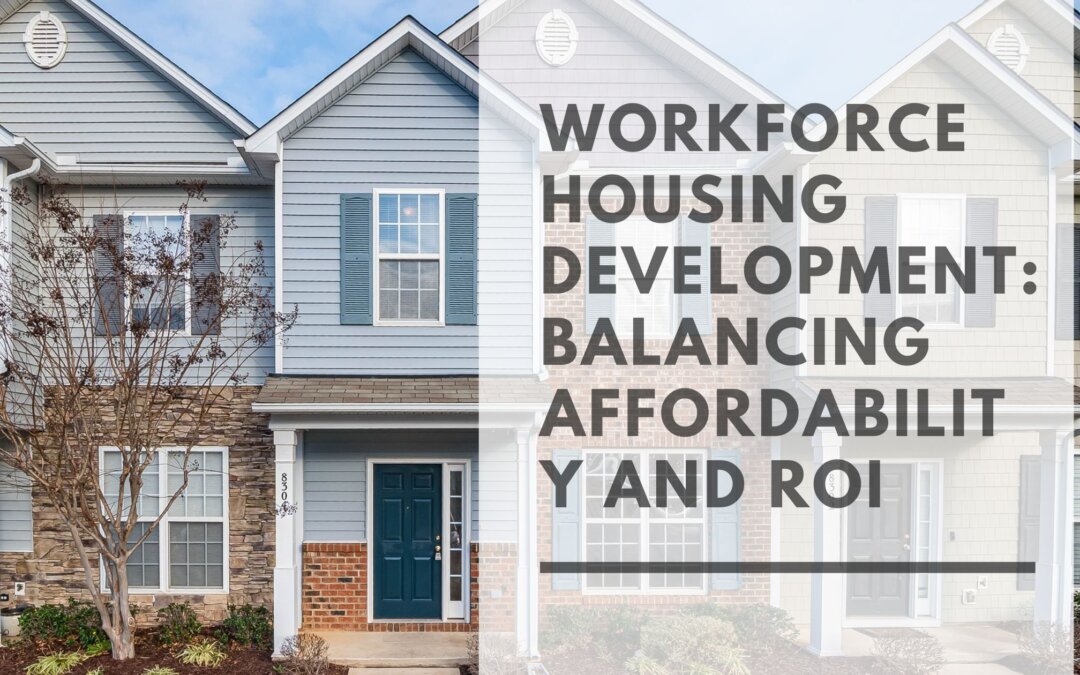Workforce housing development is gaining increased attention as real estate developers and investors look for ways to deliver returns while addressing one of the most urgent issues in urban and suburban communities—housing affordability. Workforce housing typically serves households earning between 60% and 120% of the area median income (AMI). These are essential workers—teachers, nurses, police officers—who often cannot afford market-rate housing but don’t qualify for subsidized programs.
Balancing affordability and ROI in this asset class requires a unique strategy that starts with understanding the demographics and economics of the target community. The first step is conducting a market needs assessment to evaluate the local income distribution, job growth, housing costs, and rent burdens. Many cities now include this data in their comprehensive plans, providing useful insights into under-served housing segments.
Site selection is a critical part of the strategy. Ideal locations for workforce housing developments are near employment hubs, schools, hospitals, and public transportation. These proximity advantages enhance leasing velocity and tenant retention. However, land in these locations tends to be more expensive, which adds to the challenge of maintaining affordability without sacrificing ROI.
To make the numbers work, developers often rely on creative financing strategies. This can include local or state housing tax incentives, reduced-impact fees, tax increment financing (TIF), and public-private partnerships. While workforce housing doesn’t typically qualify for Low-Income Housing Tax Credits (LIHTC), some jurisdictions offer specific programs or density bonuses to developers who agree to maintain a percentage of units within affordability guidelines.
Design and construction also play a key role. Developers can maximize efficiency by using cost-effective materials and modular construction methods without compromising on quality or aesthetic appeal. Unit layouts should reflect the needs of working families, with practical floor plans, energy-efficient appliances, and community amenities like laundry rooms, fitness centers, and playgrounds. Shared amenities can boost value without significantly increasing per-unit costs.
Zoning remains a significant barrier in many communities. Inclusionary zoning policies, which require or incentivize developers to include affordable units in new developments, can help. However, some areas still face resistance from local residents, requiring developers to engage early with the community and local officials. Demonstrating how workforce housing benefits the broader economy—by reducing commuter traffic, supporting local businesses, and enhancing school enrollment—can build support.
Underwriting for workforce housing must be both conservative and flexible. Rent caps limit revenue, so developers need to maintain tight control over operating expenses and avoid costly amenities that don’t add value for the target demographic. At the same time, long-term demand for affordable rentals makes workforce housing more resilient during economic downturns, leading to strong occupancy and stable cash flow.
From a management perspective, tenant experience is critical. Offering responsive maintenance, community programming, and digital rent payment options can improve satisfaction and reduce turnover, preserving net operating income (NOI) over time.
Exit strategies vary based on the developer’s investment horizon. Some choose to hold workforce housing long-term as a stable cash-flowing asset. Others may refinance after stabilization or sell to institutional buyers seeking ESG-aligned investments. Given growing investor interest in impact-driven real estate, workforce housing often trades at a premium due to its combination of social good and financial reliability.
In conclusion, workforce housing development presents an opportunity to do well while doing good. By aligning public policy, private capital, and practical design, developers can create sustainable housing solutions that benefit communities and deliver predictable returns. With the right location, financing, and operational strategy, workforce housing can be both a high-impact and high-performing investment in today’s evolving real estate landscape.
